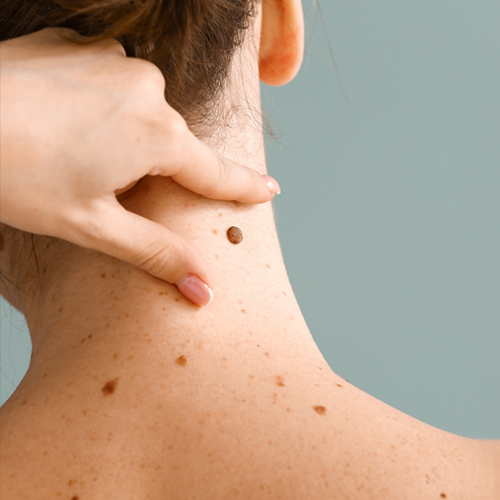Laser removal is a popular and effective method for treating various skin imperfections, including moles, warts, birthmarks, dark patches, scars, and tattoos. This guide will explore how laser treatments work, their benefits, the different types of lasers used, and what to expect before, during, and after the procedure.
What is Laser Removal?
Laser removal involves using focused light energy to target and break down unwanted skin cells or pigments. The body's natural healing processes then remove these treated cells, resulting in clearer, healthier-looking skin. Laser treatments are precise, making them suitable for a wide range of skin concerns.
How Laser Removal Works
- Selective Photothermolysis: Lasers emit specific wavelengths of light that are absorbed by the targeted pigment or tissue.
- Heat Generation: The absorbed light energy converts to heat, which breaks down the targeted cells or pigments.
- Natural Healing: The body's immune system gradually removes the treated cells, leading to skin improvement over time.
Types of Laser Treatments
-
Ablative Lasers
- CO2 Lasers: Effective for deeper skin issues like scars and warts by removing the outer layers of skin.
- Erbium Lasers: Used for precise removal of superficial skin layers, suitable for fine lines and surface scars.
-
Non-Ablative Lasers
- NdLasers: Commonly used for tattoo removal and deep pigmentation issues by targeting the deeper layers of the skin without damaging the surface.
- Alexandrite Lasers: Effective for treating pigmentation issues and removing dark patches and tattoos.
-
Fractional Lasers
- Fraxel Lasers: Target small areas of skin, creating microscopic wounds that promote collagen production and skin renewal, suitable for scars and pigmentation issues.
-
Pulsed Dye Lasers (PDL)
- Vbeam Lasers: Specifically target blood vessels, making them ideal for treating vascular birthmarks and red scars.
Benefits of Laser Removal
- Precision: Targets specific skin concerns without affecting surrounding tissues.
- Minimally Invasive: Most procedures are non-surgical with minimal discomfort and downtime.
- Versatility: Effective for a wide range of skin issues, including moles, warts, birthmarks, dark patches, scars, and tattoos.
- Customizable: Treatment can be tailored to individual skin types and concerns.
Conditions Treated by Laser Removal
- Moles: Lasers can remove benign moles with minimal scarring.
- Warts: Lasers effectively target the wart tissue, promoting its removal.
- Birthmarks: Vascular and pigmented birthmarks can be lightened or removed.
- Dark Patches: Hyperpigmentation and melasma can be treated with laser therapy.
- Scars: Acne scars, surgical scars, and other types of scars can be reduced.
- Tattoos: Unwanted tattoos can be gradually removed through multiple laser sessions.
The Laser Removal Process
-
Consultation
- Assessment: A dermatologist or laser specialist will evaluate your skin concerns and determine if laser treatment is suitable for you.
- Discussion: Discuss your goals, the expected outcomes, and any potential risks.
-
Before the Procedure
- Preparation: Follow any pre-treatment instructions, such as avoiding sun exposure and certain skincare products.
- Anesthesia: Topical or local anesthesia may be applied to minimize discomfort.
-
During the Procedure
- Laser Application: The laser device is applied to the target area, emitting pulses of light energy.
- Treatment Time: The duration varies depending on the size and number of areas being treated.
-
After the Procedure
- Immediate Care: You may experience redness, swelling, and minor discomfort, similar to a mild sunburn.
- Healing Process: Follow post-treatment instructions, including using prescribed ointments and avoiding sun exposure.
Post-Treatment Care
- Sun Protection: Apply broad-spectrum sunscreen to protect treated areas from UV damage.
- Gentle Skincare: Use mild skincare products and avoid harsh chemicals or exfoliants.
- Avoid Picking: Do not pick or scratch the treated areas to prevent infection and scarring.
Potential Risks and Side Effects
- Redness and Swelling: Temporary redness and swelling are common and usually subside within a few days.
- Pigment Changes: Some individuals may experience temporary or permanent changes in skin pigmentation.
- Scarring: Although rare, there is a risk of scarring, especially if post-treatment care instructions are not followed.
- Infection: Proper care and hygiene minimize the risk of infection.
Choosing a Qualified Provider
- Certification and Experience: Ensure the provider is certified and experienced in performing laser treatments.
- Reputable Clinic: Choose a reputable clinic with positive reviews and modern equipment.
- Consultation: Schedule a consultation to discuss your goals, skin type, and any concerns you may have.


